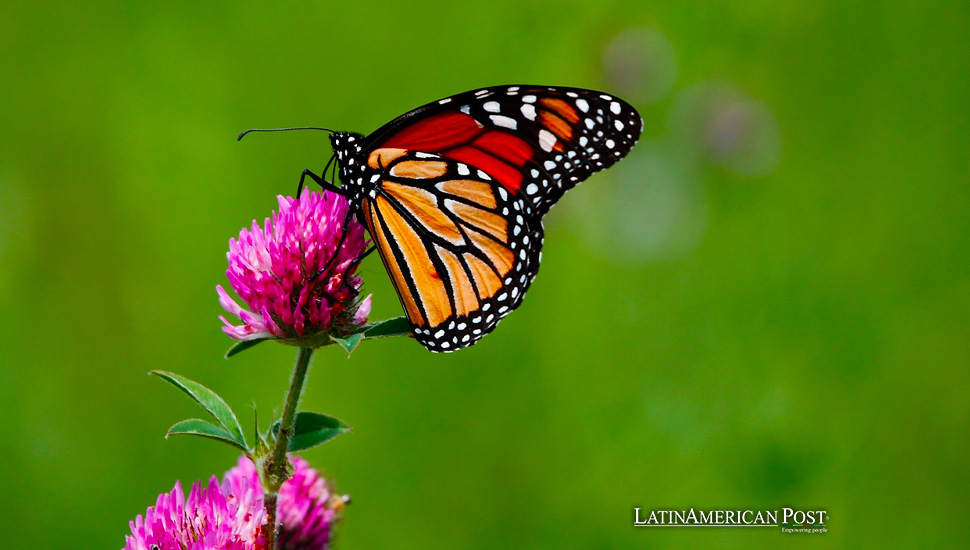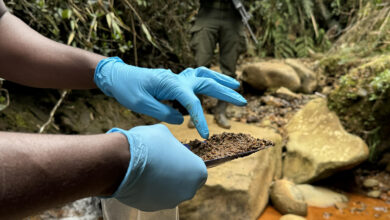Monarch Butterflies Numbers in Stark Decline in Mexico’s Wintering Areas

This year, Mexico has witnessed a staggering 59% decrease in the population of monarch butterflies in their Mexican wintering grounds, marking the second lowest count since records began, with experts citing heat, drought, and habitat loss as primary factors.
The Monarchs’ Majestic Journey
The awe-inspiring migration of monarch butterflies from Canada and the United States to Mexico and back is a spectacle of nature unmatched in the insect world. This remarkable journey, involving several generations of butterflies, faces unprecedented challenges, with the latest annual count revealing a distressing 59% decline in their numbers at Mexican wintering sites. This year, the monarchs covered only 2.2 acres, starkly contrasting to the 5.4 acres recorded last year, signaling the second lowest occupancy since monitoring efforts commenced.
Mexico’s Commission for National Protected Areas confirmed these alarming figures, noting that the lowest coverage was observed in 2013, with just 1.65 acres. The decline is primarily attributed to heat, drought, and the gradual erosion of their natural habitats. Intriguingly, a significant portion of the butterflies, approximately two-thirds of those counted, were found outside their traditional reserves. These monarchs had relocated to higher, cooler altitudes, seeking refuge from the changing climate conditions threatening their survival.
The phenomenon of migration, an essential aspect of the monarchs’ life cycle, is now at risk. The eastern population of monarchs, originating east of the Rocky Mountains in North America, finds sanctuary in the pine and fir forests west of Mexico City during winter. However, the western population, which winters in California, is also experiencing a decline. While the butterflies themselves are not on the brink of extinction, the future of their migratory pattern hangs in the balance, threatened by an array of environmental challenges.
Obstacles on the Journey Back
The journey back to Mexico, embarked upon by the descendants of the butterflies that wintered there, is fraught with obstacles. Drought, extreme weather conditions, and habitat destruction, particularly the loss of milkweed plants essential for egg-laying, are just a few of the hurdles they face. Additionally, the use of pesticides and herbicides, illegal logging, and the deterioration of tree cover in the Mexican reserves due to disease, drought, and storms further exacerbate the situation, endangering this extraordinary migratory phenomenon.
Decrease in Deforestation
Despite the grim outlook, there is a glimmer of hope. This year, deforestation in the monarchs’ Mexican wintering forests has significantly decreased, with only about 10 acres lost, primarily to illegal logging. This represents a considerable reduction from the previous year, when 145 acres of forest cover were destroyed. The conservation efforts to curb illegal logging, a significant threat to the monarchs who rely on clustering on trees for warmth during the cold months, appear to bear fruit.
Also read: Brazilian Caught Smuggling Endangered Frogs at Bogotá Airport
The decline in monarch butterfly numbers is a clarion call for increased conservation efforts. The longest migration of any insect species known to science, the monarchs’ journey is not just a marvel of nature but also a crucial indicator of the health of our ecosystems. As these delicate creatures face mounting threats from human activity and environmental changes, the urgency to protect their habitats and ensure the continuation of their awe-inspiring migration has never been more significant. The story of the monarchs is a poignant reminder of the interconnectedness of all life and the importance of safeguarding our planet’s biodiversity for generations to come.





